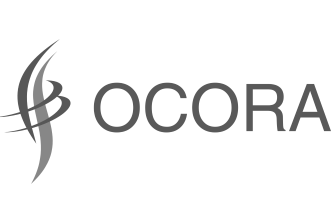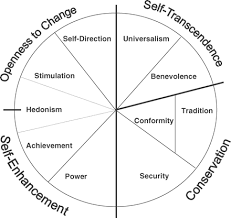Values
What are values? It seems impossible to escape the talk about values in today’s business world. They are on everyone’s mind and all seem to agree that it is those values that we need to understand and align ourselves with to be successful in today’s globalised world and to effectively implement organisational change.
However, when it comes to defining what is actually meant by these ‘values’, the subject suddenly becomes mysterious and abstract. This is not surprising, because values are difficult to explain and even harder to understand, especially when we try to link those values to employees’ reactions to change.
Rokeach defined values as motivational life goals that guide people’s attitudes and behaviours, and Schwartz later added that at the individual level, values are personal psychological constructs, whereas at the cultural (or organisational) level, they are seen as shared norms, meaning they cannot be directly measured.
This is important to know because it explains that everyone’s attitudes and behaviours are a direct result of what they value most in their lives. Therefore, we need to understand what these values represent.
The history of values
We have been trying to understand values since Plato and Aristotle spoke about ‘virtues’ that are either inherent to the individual or are able to be taught. These philosophers explained these virtues to be a balanced mean between the vices of excess and deficiency. Modern philosophers recognised that human needs provided the basis for an individual’s values system, and as such, they now become relevant to the functioning of organisations.As in any society, organisations have their own, unique values, which are an aggregate of the individual’s values present in the teams or department. These values are not the ones one reads when entering the glossy foyer, proudly presented on a shiny plaque, but, rather a representation of the way the organisation deals with, and solves, common problems based on the values of the individuals within.
Values and Change
Research has shown that, contrary to common belief, values vary more within societies than across them and as such it is the personal values that are most important to understand. As the focus of this blog is on organisational change, we now turn our attention to how a person’s values can affect change implementations.
Rokeach explained values to be an enduring belief that a specific mode of conduct or end-state of existence is personally or socially preferable to an opposite or converse mode of conduct or end-state of existence. This means that a person determines the importance of any value by their desired self-concept and would assign the highest importance to those values that would allow them to realise this concept. All humans place at least some importance on all values, but their rank order of importance varies. Further, personal values are influenced, but not determined, by a person’s cultural, social, personal, and occupational environment.
The structure of values
The most important understanding of values was presented by Schwartz who found that personal values formed a circular structure that indicated the relatedness of values, based on the motivational continuum that underlie them. Neighbouring values in the circle share compatible motivations and opposing values have conflicting motivations. Schwartz divided the motivational continuum into 10 basic universal values. He described their relationship with four higher-order-values at opposing ends of two bi-polar dimensions: Self-transcendence vs Self-enhancement and Openness-to-Change vs Conservation values.
The Values Continuum; Schwartz 1992
Self-transcendence describes the extent to which values “motivate people to transcend selfish concerns and promote the welfare of others, close and distant, and of nature”, whereas Self-enhancement describes the extent to which values motivate people to enhance their own personal interests, even at the expense of others. Openness-to-Change describes the extent to which values motivate people toward an exciting, independent and challenging life, whereas Conservation described the extent to which values motivate people toward the status quo, the acceptance of traditional customs and ideas, as well as self-discipline and obedience. From this, it is clear that the Openness-to-Change versus Conservation dimension is most important to the implementation of organisational change.
Individual values and organisational change
Schwartz explained that values, in the form of conscious goals, are expressions of individuals and societies in an attempt to cope with universal requirements of life. These needs are those of the biological organism, the interaction of societies, and the smooth functioning of groups, which is directly relevant to organisations. These values express themselves in related behaviour and therefore need to be understood to be able to manage them during change. How these values express themselves is explained next.
Conservation Values
Conservation values express the conformance of individuals to the needs of societies and the groups that they belong to. These values emphasise submission and self-restriction, the defence against actions that could cause instability or actions that threatened traditional practices. The values that belong to the conservation values-dimension are tradition, conformity, and security.
Tradition values. These values represent the acceptance, commitment, and respect for traditional customs and ideas. Individuals with strong tradition values exhibit behaviours that reflect respect and commitment, as well as subordination to the persons of authority with whom the individual recurrently interacts, such as superiors at work. It was found that a significant relationship between tradition values and closed-mindedness exists. Tradition values are expected to inhibit the acceptance of change, which has been confirmed in a number of relevant studies, for example that tradition values are incompatible with the new direction set by a change and could result in conflict with the new directives.
Conformity values are those values that are likely to lead to the restraint of impulse actions that could have the potential to upset or harm others or violate social expectations. Individuals guided by conformity values typically exhibit behaviours of self-constraint, consistent with the expectations of social and group norms, in an effort to provide a smooth functioning of the entity they are part of. It has been shown that individuals guided by conformity values displayed self-restraint, obedience, and the honouring of elders and supervisors. Conformity values are expected to inhibit the acceptance of change as for example a direct, negative relationship between conformity, as well as tradition values, and an employee’s job mobility, that is, his or her preparedness to take on new roles or follow new processes.
Security values are those that emphasise safety, harmony, and stability for the individual and/or the group, whereas even the group’s desire for safety is ultimately an extension of the want for security for the self and those with whom one identifies. Security values might inhibit the acceptance of change where previously successful processes, patterns, and habits are changed by the new directions. Greater predictability, especially of the change outcomes, reduces resistance by security valuing employees.
Openness to Change Values
Individuals who favour conditions that allow for independent thought and action are proposed to display greater openness to change than those attributing a lower value to such conditions. Employees who seek self-direction and stimulation in the workplace embrace changes in the workplace more openly and willingly if these changes offer the opportunity for the enactment of such values-related behaviours. The openness to change values dimension entailed the self-direction and stimulation values types.
Self-direction values are those that support independent thought and action. Employees with these values are far more accepting of organisational change practices if they are allowed autonomy of thought and action during the process. Self-directed supervisors display a significant increase in support for change if autonomy of input is allowed. Also, job control and opportunities for professional development, as well as role autonomy are precursors for self-directed staff to easier commit to a change.
Stimulation values are defined as the assumed need of individuals to seek variety and stimulation in their lives in order to achieve optimal inspiration. This values type is representative of novelty- and excitement-seeking, or daring behaviour. Employees with such openness to new experiences display significantly less resistance to change behaviours than individuals low on stimulation values. It has also been suggested that a challenge-seeking attitude amongst change leaders is fundamental for a “learning organisation”, where the trying out of new ideas and acceptance of failure during the change process are essential for success.
Conclusions
The impact of values can take different forms. First, acceptance of change is likely to be a values-expressive behaviour, most strongly related to the openness to change, and conservation values-dimensions. Those who place a high importance on being open to change are expected to be more receptive, and those who placed a high importance on conservation are expected to be less receptive to change. Second, values-behaviour relations are influenced by normative pressures, which potentially promotes a positive reaction to change, if there are positive norms around change. Such norms can be found where the organisation is perceived to place a high importance on openness to change. Third, organisational change outcomes were found to have been impacted by perceived values-congruence, but this, we will discuss at another day.


